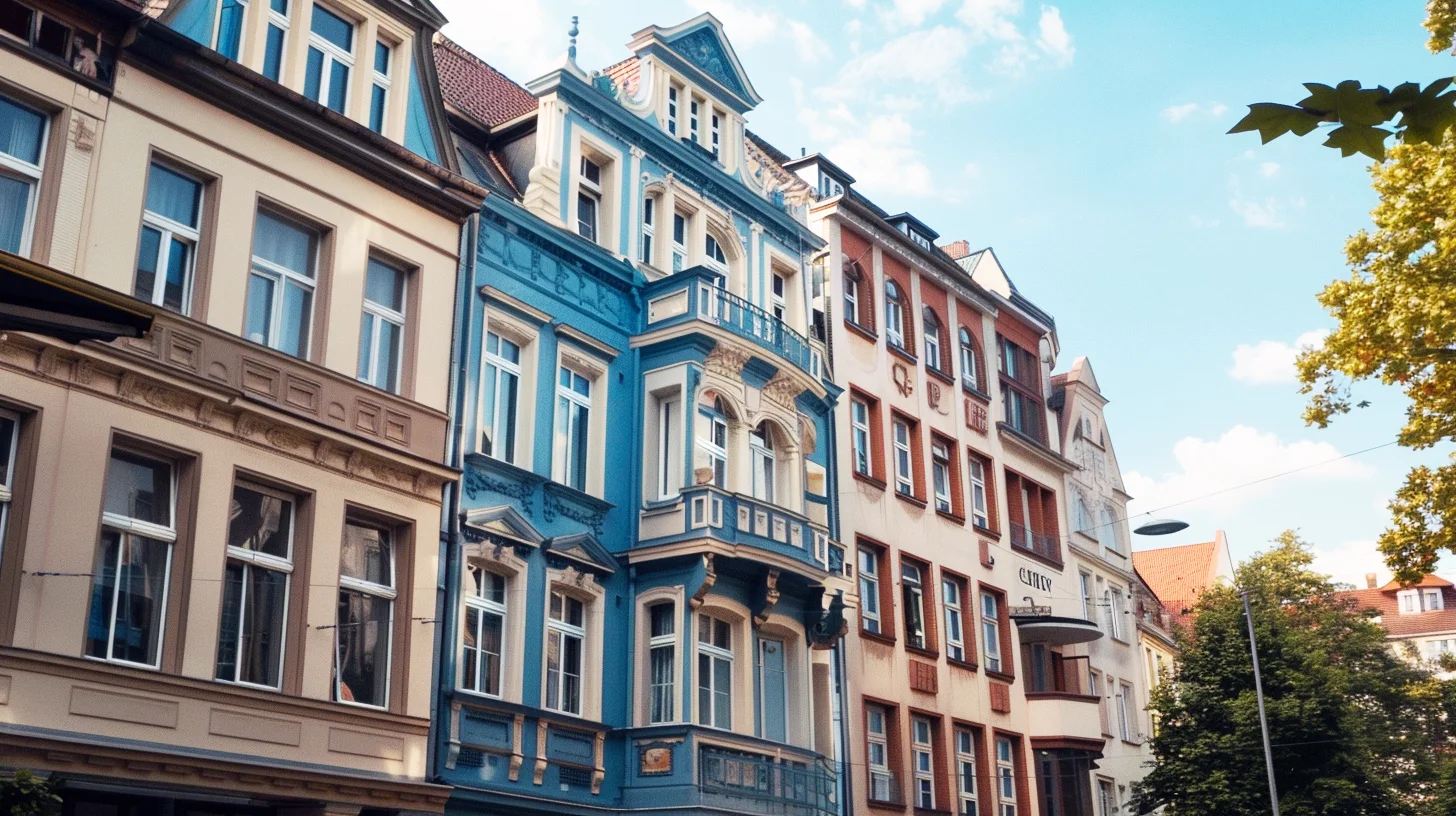Listed real estate: Tax deduction for historic buildings in Germany

Every historic property has its own special flair – be it a beautiful villa, an exclusive older building or a charming apartment in a magnificent old building. There are many special features when buying listed properties. In this blog post, we explain what is meant by listed properties and what you should bear in mind when buying such properties. We also show you the advantages of listed properties and how you can finance them.

There are some special features of listed properties
What are listed properties?
Listed properties are objects or monuments that are particularly worthy of protection. These may be several years old, but this does not mean that they are falling apart. They are mainly structures such as bridges, railroad stations, houses or even lighthouses. As such properties are considered particularly worthy of preservation, they are on a special list of monuments.
Each federal state has its own monument protection law. Monument protection is subject to state law in the Federal Republic of Germany. The criteria for monument protection of such properties differ depending on the federal state.
Investors who wish to invest in listed properties have numerous tax advantages and funding opportunities. It is also advisable to know which location and which condition is decisive when buying listed properties. More on this below.
What do I need to consider as an investor when buying a listed property?
Once you have decided to buy a listed property, you should pay attention to the following relevant criteria:
Location
The right location plays a very important role here. Although the trend nowadays is to move to larger cities with good infrastructure, there are some specifics that should be taken into account. In general, it is advantageous for the real estate investor if the building value is high in relation to the land value. This gives the investor the highest possible depreciation later on. Another relevant factor is a positive demographic trend and low or falling unemployment, as in
- Chemnitz
- Kassel
- Leipzig
However, in locations where the land value is too high (for example in Munich), it is not particularly attractive for investors to acquire listed properties there.
Condition
From the investor’s point of view, it is fundamentally important that the listed property is comprehensively renovated, as this renovation can then be claimed for tax purposes in the form of a special depreciation allowance. This also makes these properties attractive for high earners. In addition, the better a listed house or apartment is modernized, the less time-consuming and cost-intensive it is for the property investor. Before the planned renovation measures for listed properties, it is necessary to have the existing substance for buildings, the so-called material stock of buildings. This building substance can be found in the requirements of the respective monument office depending on the federal state. The material stock makes it possible to properly renovate the listed property in accordance with the relevant regulations.
Energy efficiency
By and large, this is an important component when selling or renting listed properties. It is also important to note that the better the building or apartment is renovated, the better the energy efficiency of the property. As a result, the costs of letting listed properties are much lower, which is also particularly advantageous.
Checklist when buying listed properties
Credit check
If the investor wants to finance their listed property through the bank, it is necessary to carry out a credit check.
Valuers
Before viewing a listed property, you should commission a specialist – an appraiser who is very familiar with listed properties and can provide the investor with professional advice. They can check the costs of the listed property and its condition and assess possible renovation work.
Renovations requiring approval
The following renovation measures must be approved by the relevant authorities:
- Renewal of sanitary facilities
- Replacing the floor covering
- Remodeling and refreshing the attic, roof truss and cellar
- Replace windows and doors
- Paint the walls in the interior rooms and the façade of a house
- If necessary, remodel the rooms and improve their use
Legal framework conditions
An important prerequisite when purchasing and renovating properties that are listed is to contact the relevant authorities, who can provide the buyer with comprehensive support. An indispensable part of the legal conditions is the execution of the purchase contract by the notary. His tasks also include the removal of land charges in the land register.
Land register
The buyer should look at the land register at the relevant land registry office. It contains important information on possible debts and any building encumbrances on the monument building, which the investor should be aware of.
Proof of monument protection
You can check whether the house or apartment is a listed building in the list of listed buildings. This can be found at the relevant monument protection authority or the State Office for the Preservation of Monuments in each federal state.
Own use vs. letting
When buying a listed property, you are quite sure whether you want to live there yourself or rent it out. This is an important criterion, as there are significant differences between the two options in terms of depreciation.
The advantages of a listed property
- A major advantage of listed properties is the very good tax savings. This applies to both owner-occupiers and landlords. More on this below.
- Compared to shares, listed properties are relatively safe investments.
- Listed real estate as an investment offers good protection against inflation, especially in times of crisis.
- When buying listed properties, you can receive certain subsidies from the state. We explain these in the last section of this blog post.
- In principle, listed properties are cheaper to buy per square meter than new builds. However, prices vary depending on the location. However, if the building has been renovated, prices can be just as high as for newly built properties.
- Due to the high demand and exclusivity, old buildings are in high demand. It is therefore particularly advantageous for the landlord, as the rental income is relatively high. Added to this is the increase in value, which increases over time. But a good location of the property also plays a major role in the increase in value.
- By preserving a listed property, the investor receives a historically significant feature that is worth protecting. This holds even more charm than a conventional investment property.
Listed property depreciation
Depreciation is a tax deduction for the wear and tear of assets. This includes renovation costs that fall into the category of income-related expenses. This includes, for example, the conversion of windows, a new heating system, a modernized facade, a new roof or new toilets. However, this only applies to the listed building, but not to the property. Owners receive tax relief by means of depreciation, as the costs of renovating listed buildings can be very high.
Financing for listed properties
It is very important for every real estate investor to know how to finance listed properties and what funding options are available. Here you can find out which service providers can help you with these questions.
You can apply for low-interest promotional loans from KfW – the Kreditanstalt für Wiederaufbau. This is a government type of financing. It is therefore possible to obtain up to 100,000 euros – 120,000 euros for the necessary renovation measures for your listed property. The good thing about this is that the costs for advice and ancillary costs can also be subsidized by the KfW.
Another financing option is available from banks and credit institutions. Regardless of whether you are buying or renovating your listed property, you can obtain attractive loans in this way. You can use these in various areas depending on your needs, for example:
- Building loan agreements
- Annuity loans
- Instalment loans
- Insurance loans
The largest private organization for monument preservation is the German Foundation for Monument Protection. It works to save listed buildings that are in urgent need of repair. As an investor, you can therefore also obtain support from this organization if you own such an eligible property.
We are happy to support you in selecting a suitable listed property and the necessary financing. Thanks to our network of over 500 banks, we are able to negotiate the best conditions for you.

